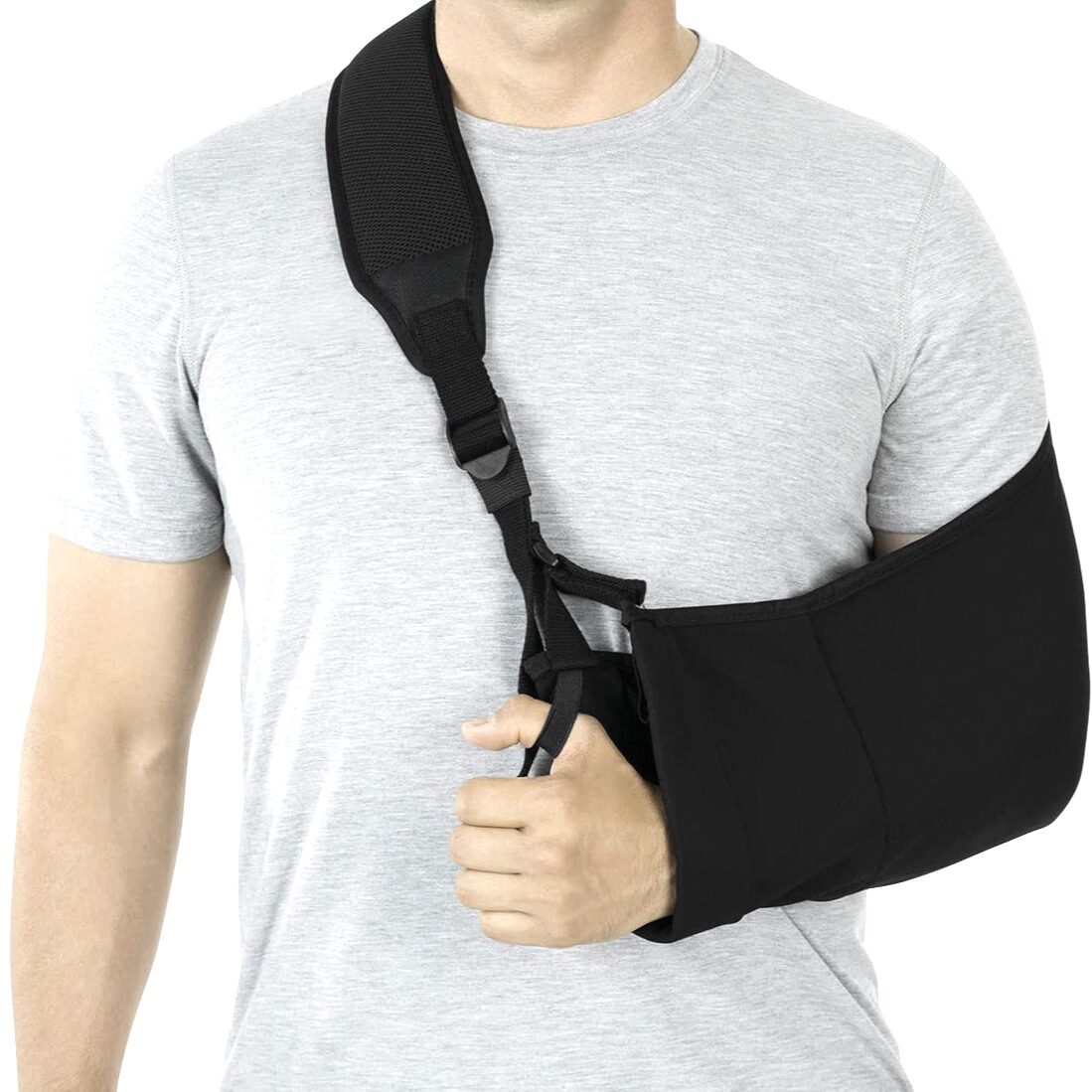No products in the cart.
Rotator Cuff Sling
£9.99inc VAT
- 1x Rotator Cuff Arm Sling designed to immobilize your Arm, Shoulder and Elbow and improve injury recovery
- For Both Men & Women
- One size fits featuring fully adjustable straps that help keep the arm sling in the right position for you
- Recommended for treating and easing Rotator Cuff injuries, Fractures & Trauma, Dislocations, Tennis elbow, Tendonitis, Muscle, Tendon & Ligament sprains Strains and Tears
- Ideal for providing extra support that helps to ease pressure off your Arm, Shoulder and elbow allowing for faster healing and improved recovery after an injury
- Thumb loop helps keep your hand protect and support your hand
- Features a padded shoulder strap that does not dig into your neck or shoulders
- Made from lightweight and breathable materials that wick moisture away from your skin keeping you feeling comfortable and dry
- Includes a full 30 day money back guarantee if you are not 100% satisfied with your purchase!
1 Review For This Product
Fast & Secure Checkout Through Paypal
Pay with Paypal the secure payment gateway that accepts all credit and debit cards. Paypal is free and secure and no credit or bank information is ever stored or shared with us.
Fast Dispatch
Enjoy your items soon with quick dispatch via Royal Mail First Class. Expect to have your items between 1-3 days for domestic orders. 7-10 Working days for international orders.
Return Policy – 30 Day Money Back Guarantee
We are so confident that you will just love our product that we offer a full 30 day money back guarantee. In the unlikely event, you are unhappy with your purchase you can simply return it within 30 days for a refund. Please contact us via the form on the contact us page to start your return.
To return an item please send it to: Nuova Health UK, 81 Highfield Lane, Waverley, Rotherham, S60 8AL. Please include a note with your order id so we know who to refund. Please retain your postage receipt as proof of postage. All that we ask is that the item is in the original packaging and unused.



by Morag Poole
Purchased this sling as a spare to the one I got from the hospital after my rotator cuff surgery. I’m really glad I did as this sling offers exceptional support. As soon as you let the sling carry the weight of your arm, the Velcro holds firm and stays secure much better than the hospital one. Money was well spent!!!